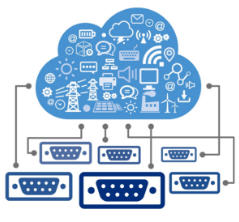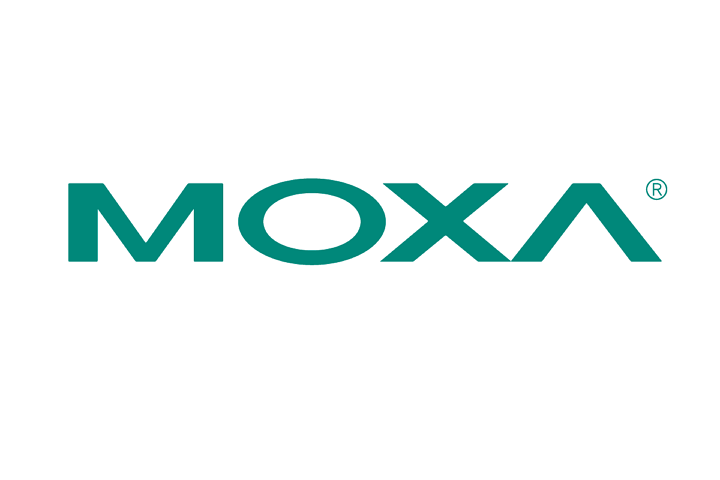Getting rid of the outdated and embracing the modern—this is typically one of the initial thoughts that arises when discussing the Internet of Things (IoT). However, this isn’t always the case. In reality, most of the time, what is needed is simply finding a way to enhance the use of existing technology by incorporating new functions to streamline operations and enhance business performance.

Within the realm of IoT, the primary focus lies in connecting the various devices to the Internet. According to IMS Research, a majority of the devices currently in operation are legacy devices. Many of these devices are situated in remote areas and have not yet been connected to the Internet. A significant portion of these legacy devices relies on serial-based communication and continues to play a crucial role in collecting and transmitting data across various applications worldwide. It’s obvious that the value of data grows when it can be easily accessed by applications that can efficiently utilize it for monitoring purposes. Therefore, the pressing challenge faced universally in the Industrial IoT sector is to bring these legacy devices, already functional and operational, online. Projections indicate that by 2020, the number of devices connected to the Internet will surpass 50 billion.
When striving for comprehensive connectivity, numerous questions arise. A recurring question is: Is there still a place for serial-to-Ethernet technology in the Industrial IoT landscape? For many practical reasons, the answer is unequivocally affirmative. Factors such as the longevity of devices, the simplicity of serial-to-Ethernet communication, and cost considerations are the driving forces behind the prevalence of serial-to-Ethernet connectivity in the IoT. This article elaborates on the significance of these three factors in emphasizing the importance of serial-to-Ethernet connectivity within the Industrial IoT.
1: Maintain the Status Quo
When it comes to legacy devices, the notion of obsolescence should not even be considered. Numerous legacy devices boast extensive lifespans, dutifully performing their designated functions flawlessly for an average of up to 30 years. Hence, why alter something that is still functioning perfectly? Firstly, from a financial perspective, replacing these devices does not make sense. Businesses operating on tight budgets might face significant challenges if compelled to needlessly upgrade a large number of embedded devices. Secondly, the straightforward design, ease of control, low deployment costs, and simple maintenance of serial devices strongly advocate for their presence in the Industrial IoT landscape.
The essence of the IoT is not about severing ties with the past, but rather about leveraging existing assets more intelligently to exploit the potential of the Industrial IoT. The promise of connecting legacy devices to the Internet is manifold: unlocking the data they hold, remotely rectifying faults, and implementing preventive maintenance, among others. Therefore, following the wisdom of the esteemed British statesman Winston Churchill: “Remain composed and continue progressing.”
2: Embrace Simplicity

Harnessing the IoT for your benefit does not need to be complex. The fundamental principle of effective design dictates that systems perform optimally when kept simple rather than overly complicated. As the IoT expands, an increasing number of sensors are deployed to capture data in the field. Serial communication plays a critical role in accessing and transmitting this data in the field, primarily due to its ease of implementation and use. Even advanced technologies like surface wave technology rely on serial communication to deliver the data to end users, despite their intricate nature. The trend in the sensor industry is to focus on developing sophisticated sensing technologies while continuing to rely on serial communication due to its user-friendliness.
3: Cost-Efficiency Matters

Opting for serial devices and serial-to-Ethernet communication is a sensible business practice for those managing the finances. Compared to utilizing Ethernet devices in a pure Ethernet setup, serial-to-Ethernet communication can, on average, save businesses up to 20% in network implementation costs.
An essential factor to consider is the specific requirements of a device. For devices such as power meters or water meters that process low-volume data streams, a serial-based device is the ideal choice. It is more cost-effective than Ethernet-based technology and offers comparable results. Another aspect to contemplate is the frequency at which data updates are required. If data updates are only needed every five minutes, for instance, in non-critical applications, there is no reason to dismiss serial-to-Ethernet connections as too sluggish.
From the perspective of SCADA operations, the cost of IP addresses is another pertinent consideration. In SCADA systems, the number of IP addresses impacts the costs incurred. Many small- to medium-sized businesses typically opt for a 1,000-point IP address package to maintain manageable costs. In a pure Ethernet architecture, each connected device necessitates an individual IP address, while a serial-to-Ethernet architecture provides the added benefit of aggregating multiple connected devices to a single IP address through a serial-to-Ethernet converter.
Serial-to-Ethernet Solutions
The true allure of the Industrial IoT lies in connecting a multitude of devices adhering to diverse connectivity standards and communication protocols to the Internet. Serial-to-Ethernet solutions facilitate the seamless integration of these devices into Ethernet-based networks. These solutions open up avenues to enhance the efficiency of legacy devices, preempt failures, and introduce new services. Serial device servers and protocol converters/gateways are the primary solutions connecting serial endpoints to gather and transmit data for analysis. To ensure smooth integration, system integrators should opt for gateways due to their user-friendly nature, low-cost deployment, and easy troubleshooting.
Moxa’s Solutions
As the IoT progresses, serial-to-Ethernet architectures will remain prevalent. System integrators must select the most suitable serial-to-Ethernet solutions for their networks based on contemporary technology and cost-effectiveness. Considering these criteria, they should seek out vendors offering a comprehensive range of industrial communications solutions. In this regard, Moxa stands out as the ultimate destination for seamless IP enablement, as its NPort®and MGate™ series are industry pacesetters in serial-to-Ethernet connectivity. NPort® serial device servers offer a variety of operation modes, such as Real COM Mode, TCP Client Mode, and UDP Mode, to accommodate different types of serial devices on a network. Furthermore, each operation mode of the NPort® is equipped with numerous advanced functions to assist users in streamlining operations and maximizing the benefits of serial-to-Ethernet connectivity. Moxa’s MGate™ gateways facilitate protocol conversions between SCADA/PLC and devices employing different protocols. Notable features that distinguish MGate™ gateways from their counterparts include straightforward configuration via a user-friendly web console, simple maintenance with built-in monitoring and diagnostics, and dependable performance.
To delve deeper into Moxa’s cutting-edge serial-to-Ethernet solutions, explore our guides on device connectivity and maximizing the potential of Modbus.
- Not Only for Automobiles: Discovering CANbus Technology in Various Industrial Settings - October 29, 2024
- Boost Your Network Performance: An Exciting Manual to PoE Switches! - September 10, 2024
- Understanding Gigabit Switches: Industrial vs Regular Gigabit - September 4, 2024


